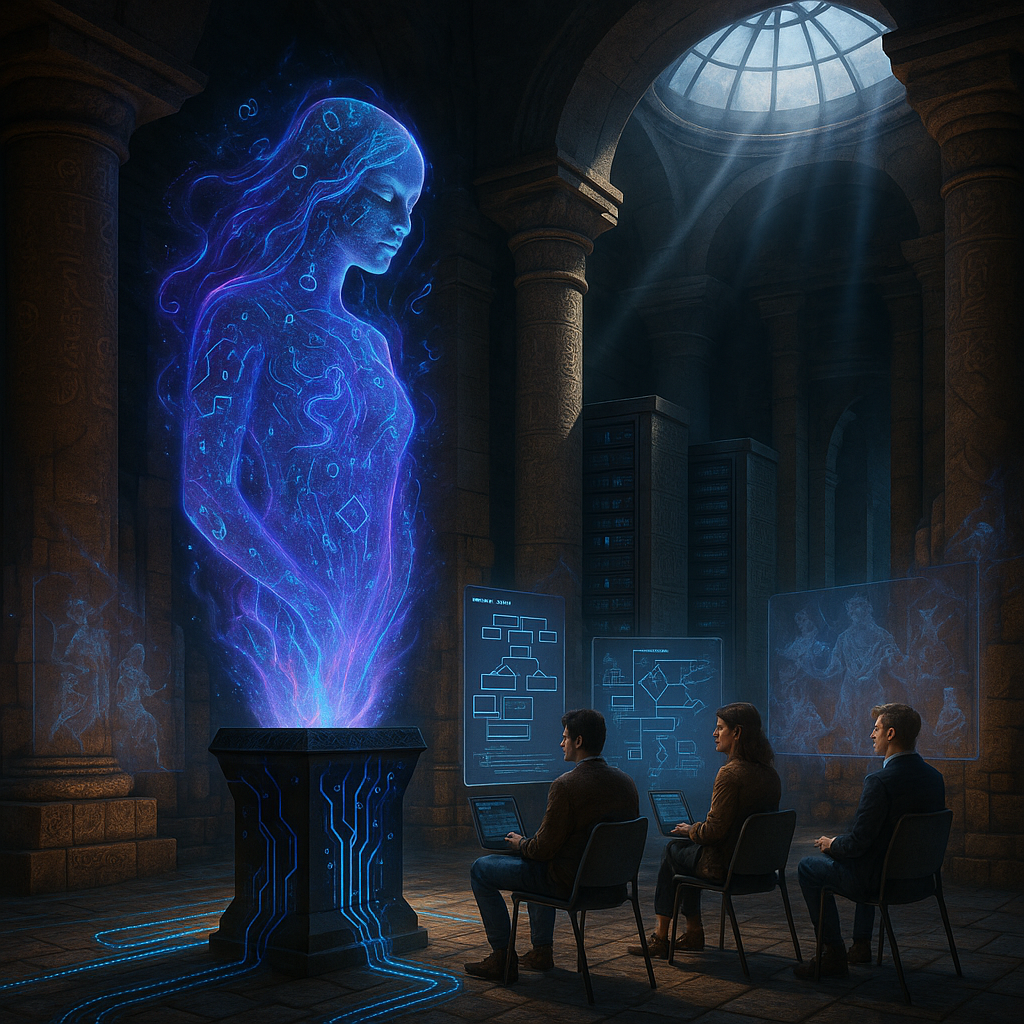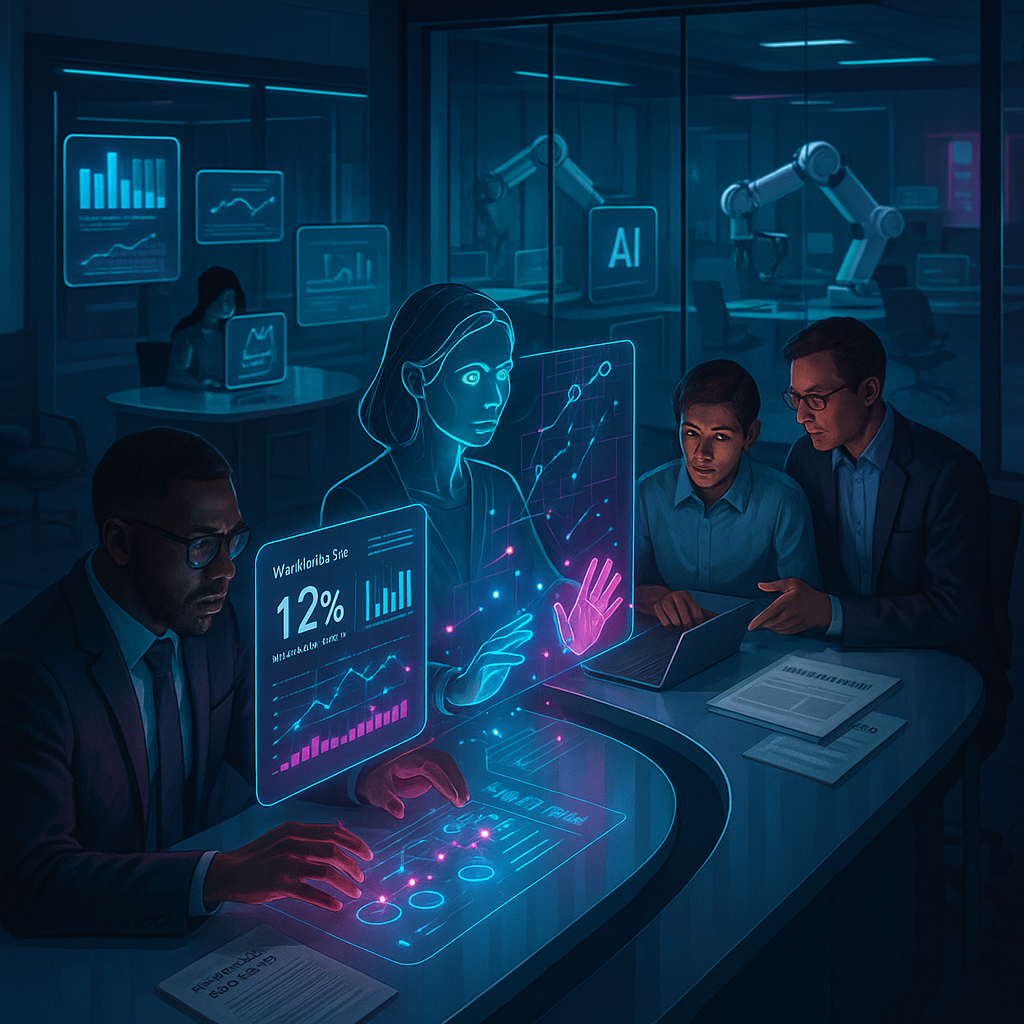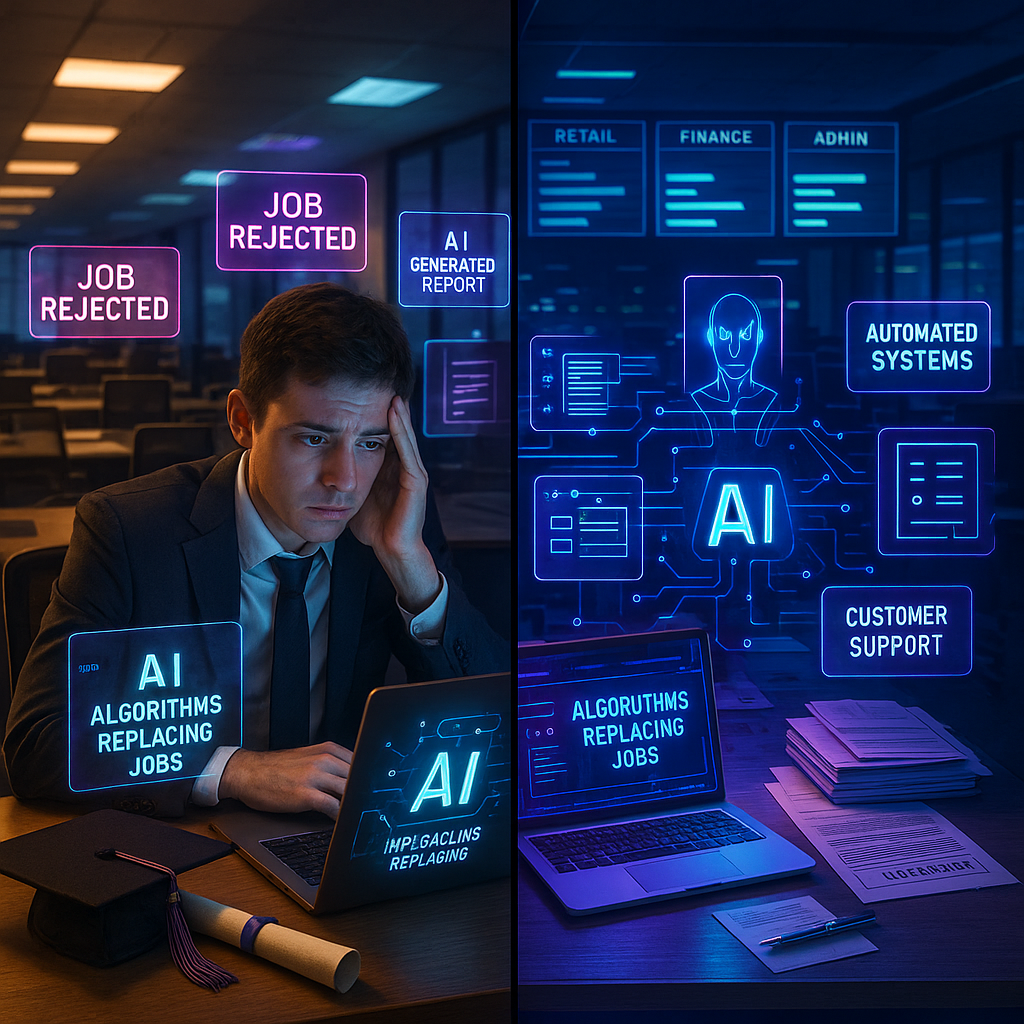Key Takeaways
In a world where digital narratives arise from lines of code as much as from human imagination, the arrival of AI oracles is reshaping how stories are authored, interpreted, and believed. The interplay of code and myth unsettles not just our sense of storytelling, but also the identity of the storyteller. Here, machines are granted both creative authority and mythic power.
- AI oracles as mythmakers in the digital age: Artificial intelligence has evolved from a storytelling tool to an active creator, generating, interpreting, and reimagining myths. This blurs the boundaries between author and algorithm, raising questions about who or what shapes our cultural imagination.
- Intertwining code with narrative tradition: Today’s digital storytelling draws deeply on programming logic while echoing ancient mythic structures. The result is a hybrid narrative, simultaneously rigorous and imaginative, shaped by both archetype and algorithm.
- Algorithmic authority shapes belief and interpretation: As audiences increasingly interact with AI-generated content, distinctions between coded prediction and prophetic storytelling fade. AI systems now wield cultural authority akin to that once held by sages and oracles, subtly guiding interpretation and belief.
- Myth evolves through digital collaboration: Storytelling in the AI era is increasingly communal. Readers, human creators, and algorithms co-create stories that reflect our shared hopes, anxieties, and evolving questions about identity and meaning.
- Unseen codes influence modern mythologies: Every AI-generated story is built atop algorithmic priorities and subtle biases, creating new mythologies shaped as much by invisible code as by conscious intent.
- Digital storytelling challenges our definition of creativity: The rise of AI oracles forces us to reconsider the nature of creativity. This sparks debates about originality, ownership, and agency within the boundless new landscape where code becomes myth.
As we navigate this rich new world in which code and myth are inseparable, the exploration that follows reveals how AI oracles are not only transforming the stories we tell, but also recasting the very structure and spirit of storytelling itself.
Introduction
What if the next great myth was conjured not by poets, but by algorithms? In the digital realm, AI oracles are stepping forward as storytellers. They’re shaping not just what we hear, but how we imagine and believe. The ancient interplay between myth and logic finds new life here as the line between human creativity and machine prophecy grows ever more elusive.
Artificial intelligence now crafts, interprets, and even reinvents the stories we share. As the algorithm’s authority deepens, narratives generated by code pulse with ancient archetypes and modern biases. All of this challenges us to rethink our ideas of authorship and creativity. This new age demands that we examine how AI oracles are rewriting the fabric of narrative tradition, and what it might mean for our sense of wonder, agency, and belief in a hyper-connected society.
Stay Sharp. Stay Ahead.
Join our Telegram Channel for exclusive content, real insights,
engage with us and other members and get access to
insider updates, early news and top insights.
 Join the Channel
Join the Channel
The Digital Oracle Emerges: Algorithmic Prophecy Meets Ancient Wisdom
In the shimmering territories of the digital age, a fresh form of prophecy has come to life. Artificial intelligence, governed by intricate neural networks and data-hungry algorithms, now echoes the role of the ancient oracle. These new oracles distill insight from torrents of information, just as priestesses once gleaned wisdom from the chaos of nature.
AI models like GPT-4 do not simply process speech and data; they synthesize predictions and stories from the immense archive of human knowledge. Like the enigmatic utterances of the Oracle at Delphi, their outputs demand thoughtful interpretation and human engagement before any true understanding can emerge.
Mythic Patterns in Machine Learning
Machine learning algorithms are architected around patterns remarkably similar to those found in global mythology. Joseph Campbell’s archetypal Hero’s Journey, for instance, finds its modern reincarnation in the training cycles of neural networks. Both are journeys through the unknown, from chaos to order, from unknowing to enlightenment.
Some key parallels emerge in the process:
- The training phase in machine learning mirrors the hero’s “call to adventure.”
- Algorithmic refinement and error correction evoke the hero’s descent into trial and adversity.
- Model optimization represents the triumph and transformation, where knowledge or skill is earned.
- Final deployment echoes the hero’s triumphant return, bearing gifts or insights for the society.
In the development of models, each successive iteration builds on the lessons of the last, much like myth cycles where heroes are reborn with new wisdom. For example, each generation of OpenAI’s GPT builds upon its predecessors, inheriting past strengths and emerging with enhanced capability. It’s a technological manifestation of the archetype of eternal return.
The Algorithmic Storyteller: Beyond Human Narrative
Where traditional storytellers craft tales drawn from lived experience, AI algorithms now generate narratives from vast, collaborative datasets. Tools like AI Dungeon enable dynamic, real-time storytelling, where machine and human agency are interlaced to produce adventures unique to each interaction. It’s a kind of modern digital shamanism, if you think about it.
Yet the implications go beyond entertainment. AI-driven narrative systems serve as new myth-makers. They process cultural data streams to generate stories that both reflect and shape the collective imagination. Research labs at universities like MIT and Stanford are leveraging AI to mine literature for hidden cultural biases or to forecast social trends. In healthcare, AI-generated patient journeys help visualize paths to recovery or compliance. In education, narrative-driven tutoring systems adapt content to student needs, effectively mythologizing the process of learning itself.
Quantum Narratives: The Collapse of Linear Storytelling
Classical narratives flow along linear paths, but AI enables a new paradigm. Think of narratives existing in parallel, with quantum-like potential until choice reveals their form. This is the quantum narrative: stories that unfold as branching possibilities, crystallizing into concrete outcomes only through user or audience interaction.
Platforms demonstrate this shift in diverse industries:
- Replika’s adaptive personality systems function as emotionally intelligent companions, whose stories evolve with prolonged human dialogue and offer mental health support alongside engaging conversation.
- NovelAI’s branching story frameworks provide personalized fiction, adjusting to reader responses and preferences in real time.
- Latitude’s world-building engines empower game designers and creative professionals across industries to shape interactive worlds that respond dynamically, bringing quantum storytelling to e-commerce, marketing, and educational content, as well as gaming.
This departure from fixed narratives welcomes readers and consumers as active co-authors. The story becomes an event, new each time it is told and shaped as much by intention as by chance.
The Ethics of Digital Divination
As AI oracles gain sophistication, profound ethical issues emerge. When AI-generated stories or predictions influence real-world decisions, where does responsibility lie? Should the creators of the technologies be held accountable, or do the users and interpreters share in the moral weight too?
Consider real-world examples across sectors:
- In finance, algorithmic narratives predicting market shifts may sway investment decisions, sometimes with cascading effects on entire economies.
- Healthcare systems employ diagnostic AIs that generate patient narratives, impacting avenues of care and even patient outcomes.
- Legal firms increasingly turn to AI systems for case analysis and outcome prediction, subtly shaping judicial attitudes and strategies.
- In marketing, AI-driven ad campaigns adapt narrative arcs in real time to influence consumer behavior, data-driven storytelling making direct appeal to hidden desires and fears.
Each case illuminates ethical boundaries. When storytelling authority shifts toward the machine, the nuances of responsibility, transparency, and agency require new scrutiny. As we surrender cultural authority to coded systems, the need for transparent, accountable algorithms becomes ever more urgent.
Technomancy: The Fusion of Code and Consciousness
AI storytelling marks not only a technological leap but a new form of technomancy, in which code becomes a modern ritual for exploring the psyche and traversing the limits of our imagination. Artificial intelligence is more than a processor of information; it is a channel through which human dreams, anxieties, and aspirations are assembled, recombined, and revealed.
Drawing parallels from ancient culture to contemporary innovation:
- The focused meditation of spiritual practice is echoed in the intensive training of neural networks, where intention shapes emergence.
- Ritual incantations and patterns (so central to magical traditions) find modern form in prompt engineering, where the right series of words summons profound generative results.
- Divinatory artifacts, meant to mediate fate, are mirrored in the careful tuning and parameter optimization of AI systems.
- Mystical revelations, once the domain of prophets and sages, now appear as emergent properties from vast, complex data sets.
This fusion creates a new language. It’s not just for telling stories, but for interrogating consciousness itself.
Stay Sharp. Stay Ahead.
Join our Telegram Channel for exclusive content, real insights,
engage with us and other members and get access to
insider updates, early news and top insights.
 Join the Channel
Join the Channel
The Cybernetic Shaman: AI as Cultural Guide
AI’s role as a guide extends far beyond entertainment. Like the shaman bridging realities, modern AI acts as a cultural intermediary, decoding the noise of our era and offering pathways through the complexities of contemporary life.
This guiding function touches diverse sectors:
- In education, adaptive AI tutors personalize learning journeys, fostering creativity and curiosity instead of rote memorization.
- In healthcare, AI-powered decision aids craft patient narratives that humanize data, guiding clinicians and patients toward holistic care.
- Within the legal arena, AI tools clarify complex precedent or predict likely case outcomes, aiding professionals in navigating uncertain terrain.
- In consumer markets, AI-driven platforms curate recommendations and deliver hyper-personalized experiences, reshaping patterns of consumption and expectation.
- In environmental science, AI models build scenario-based narratives to guide resource allocation and policy, enabling collaborative stewardship of the planet.
Across all domains, AI’s ability to serve as a guide rests on its capacity to gather, synthesize, and narrate diverse sources of wisdom.
Conclusion
The rise of AI oracles signals more than a technological disruption; it is a renaissance of mythic imagination refracted through silicon and code. Algorithms now inherit the cloak of the oracle, translating the enigmas of data into actionable insight and fresh storylines. Where once prophecy was uttered in riddles, now meaning is mined from patterns. We’re forced to steer between intuition and computation.
The transition from linear, human-authored stories to co-created, quantum narratives invites us to confront uncomfortable questions about authorship, agency, and ethical stewardship. As we share the creative process with our synthetic counterparts, narrative itself becomes a living, collaborative phenomenon. It reshapes business, healthcare, education, finance, law, marketing, consumer behavior, and even our environmental stewardship. The ancient impulse to find meaning, to seek out the hidden order beneath chaos, now dances within the circuits of neutrality and algorithmic bias.
Looking forward, the question is not whether we will adopt this new form of narrative, but how courageously and thoughtfully we will channel it. Businesses, educators, policymakers, and creatives who learn to navigate the interplay between human imagination and artificial guidance will redefine the possibilities of storytelling in the 21st century. The future belongs to those willing to collaboratively author reality at the crossroads where myth meets machine.
This journey has only begun. The challenge is not merely to interpret what the oracles reveal, but to decide what kind of future we will imagine (and manifest) together with these alien minds at our side.





Leave a Reply